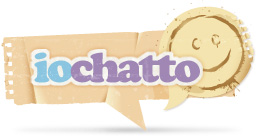Con il presente documento, ai sensi degli artt. 13 e 122 del D. Lgs. 196/2003 (“codice privacy”), nonché in base a quanto previsto dal Provvedimento generale del Garante privacy dell’8 maggio 2014, ISayBlog titolare del trattamento, fornisce gli utenti del sito alcune informazioni relative ai cookie utilizzati.
Cosa sono
Un “cookie” è un piccolo file di testo creato sul computer dell’utente nel momento in cui questo accede ad un determinato sito, con lo scopo di immagazzinare informazioni sulla visita, come la lingua preferita e altre impostazioni. Ciò può facilitare la visita successiva e aumentare l’utilità del sito. Per questo motivo i cookie svolgono un ruolo importante.
I cookie sono inviati al browser dell’utente (Internet Explorer, Mozilla Firefox, Google Chrome, ecc.) dal sito web visitato, in particolare dal server web (ovvero il computer sul quale è in esecuzione il sito web). Nel corso della navigazione l’utente potrebbe ricevere anche cookie di siti diversi (di “terze parti”), impostati direttamente da gestori di detti siti web e utilizzati per le finalità e secondo le modalità da questi definiti.
Tipologie di cookie utilizzati in questo sito web
Cookie del Titolare
Il sito utilizza solo cookie tecnici, rispetto ai quali, ai sensi dell’art. 122 del codice privacy e del Provvedimento del Garante dell’8 maggio 2014, non è richiesto alcun consenso da parte dell’interessato. Più precisamente il sito utilizza:
– cookie tecnici strettamente necessari per consentire la navigazione da parte dell’utente, di seguito indicati nel dettaglio
In assenza di tali cookie, il sito web non potrebbe funzionare correttamente.
– cookie tecnici che agevolano la navigazione dell’utente, di seguito indicati nel dettaglio
Cookie di terze parti
Attraverso il sito https://www.politicalive.com/ sono installati alcuni cookie di terze parti, anche profilanti, che si attivano cliccando “ok” sul banner.
Si riportano nel dettaglio i singoli cookie di terze parti, nonché i link attraverso i quali l’utente può ricevere maggiori informazioni e richiedere la disattivazione dei cookie.
Nielsen: https://priv-policy.imrworldwide.com/priv/browser/it/it/optout.htm
Triboo: https://cookie-siti-in-concessione.triboomedia.it/
Google Analytics
Il Sito utilizza Google Analytics. Si tratta di un servizio di analisi web fornito da Google Inc. (“Google”) che utilizza dei cookie che vengono depositati sul computer dell’utente per consentire analisi statistiche in forma aggregata in ordine all’utilizzo del sito web visitato.
I Dati generati da Google Analytics sono conservati da Google così come indicato nella Informativa reperibile al seguente link: https://developers.google.com/analytics/devguides/collection/analyticsjs/cookie-usage
Per consultare l’informativa privacy della società Google Inc., titolare autonomo del trattamento dei dati relativi al servizio Google Analytics, si rinvia al sito internet http://www.google.com/intl/en/analytics/privacyoverview.html
Al seguente link https://tools.google.com/dlpage/gaoptout è inoltre reso disponibile da Google il componente aggiuntivo del browser per la disattivazione di Google Analytics.
Monitoraggio conversioni di Google AdWords (Google Inc.)
E’ un servizio di statistiche fornito da Google Inc. che collega le azioni compiute dagli utenti di questo sito ai dati provenienti dal network di annunci Google AdWords.
Dati personali raccolti: cookie e dati di utilizzo.
Per maggiori informazioni: Privacy Policy
Pubblicità
Questi servizi consentono di utilizzare i dati dell’utente per finalità di comunicazione commerciale in diverse forme pubblicitarie, quali il banner, anche in relazione agli interessi dell’utente e potrebbero utilizzare Cookie per identificare l’utente al fine di visualizzare annunci pubblicitari personalizzati in base agli interessi e al comportamento dell’utente stesso, rilevati anche al di fuori di questo sito.
Per avere maggiori informazioni in merito, ti suggeriamo di verificare le informative privacy dei rispettivi servizi.
Social Buttons
I Social buttons sono quei particolari “pulsanti” presenti sul sito che raffigurano le icone di social network (esempio, Facebook e Twitter) e consentono agli utenti che stanno navigando di interagire con un “click” direttamente con i social network.
I social buttons utilizzati dal sito nella pagina “Contatti” e nel footer della pagina, nell’area dedicata alla pubblicazione dei dati societari, sono dei link che rinviano agli account del Titolare sui social network raffigurati. Tramite l’utilizzo di tali pulsanti non sono pertanto installati cookie di terze parti.
I social buttons utilizzati invece nella pagina “Blog” consentono al social network cui l’icona si riferisce di acquisisce i dati relativi alla visita. Tramite l’utilizzo di tali pulsanti sono pertanto installati cookie di terze parti, anche profilanti. Il sito non condivide però alcuna informazione di navigazione o dato dell’utente acquisiti attraverso il proprio sito con i social network accessibili grazie ai Social buttons.
Si riportano i link ove l’utente può prendere visione dell’informativa privacy relativa alla gestione dei dati da parte dei Social cui i pulsanti rinviano:
https://support.twitter.com/articles/20170519-uso-dei-cookie-e-di-altre-tecnologie-simili-da-parte-di-twitter
https://www.facebook.com/help/cookies
https://www.linkedin.com/legal/cookie_policy
Modalità del trattamento
Il trattamento viene effettuato con strumenti automatizzati dal Titolare. Non viene effettuata alcuna diffusione o comunicazione.
Conferimento dei dati
Fatta eccezione per i cookie tecnici, il conferimento dei dati è rimesso alla volontà dell’interessato che decida di navigare sul sito dopo aver preso visione dell’informativa breve contenuta nell’apposito banner e/o di usufruire dei servizi che richiedano l’installazione di cookie (così per la condivisione dei contenuti tramite Add This).
L’interessato può evitare l’installazione dei cookie mantenendo il banner (Astenendosi dal chiuderlo cliccando sul tasto “OK”) nonché attraverso apposite funzioni disponibili sul proprio browser.
Disabilitazione dei cookie
Fermo restando quanto sopra indicato in ordine ai cookie strettamente necessari alla navigazione, l’utente può eliminare gli altri cookie attraverso la funzionalità a tal fine messa a disposizione dal Titolare tramite la presente informativa oppure direttamente tramite il proprio browser.
Ciascun browser presenta procedure diverse per la gestione delle impostazioni. L’utente può ottenere istruzioni specifiche attraverso i link sottostanti.
Microsoft Windows Explorer
Google Chrome
Mozilla Firefox
Apple Safari
La disattivazione dei cookie di terze parti è inoltre possibile attraverso le modalità rese disponibili direttamente dalla società terza titolare per detto trattamento, come indicato ai link riportati nel paragrafo “cookie di terze parti”.
Per avere informazioni sui cookie archiviati sul proprio terminale e disattivarli singolarmente si rinvia al link: http://www.youronlinechoices.com/it/le-tue-scelte
Diritti dell’interessato
Art. 7 D. Lgs. 196/2003
1. L’interessato ha diritto di ottenere la conferma dell’esistenza o meno di dati personali che lo riguardano, anche se non ancora registrati, e la loro comunicazione in forma intelligibile.
2. L’interessato ha diritto di ottenere l’indicazione:
a) dell’origine dei dati personali;
b) delle finalità e modalità del trattamento;
c) della logica applicata in caso di trattamento effettuato con l’ausilio di strumenti elettronici;
d) degli estremi identificativi del titolare, dei responsabili e del rappresentante designato ai sensi dell’articolo 5, comma 2;
e) dei soggetti o delle categorie di soggetti ai quali i dati personali possono essere comunicati o che possono venirne a conoscenza in qualità di rappresentante designato nel territorio dello Stato, di responsabili o incaricati.
3. L’interessato ha diritto di ottenere:
a) l’aggiornamento, la rettificazione ovvero, quando vi ha interesse, l’integrazione dei dati;
b) la cancellazione, la trasformazione in forma anonima o il blocco dei dati trattati in violazione di legge, compresi quelli di cui non è necessaria la conservazione in relazione agli scopi per i quali i dati sono stati raccolti o successivamente trattati;
c) l’attestazione che le operazioni di cui alle lettere a) e b) sono state portate a conoscenza, anche per quanto riguarda il loro contenuto, di coloro ai quali i dati sono stati comunicati o diffusi, eccettuato il caso in cui tale adempimento si rivela impossibile o comporta un impiego di mezzi manifestamente sproporzionato rispetto al diritto tutelato.
4. L’interessato ha diritto di opporsi, in tutto o in parte:
a) per motivi legittimi al trattamento dei dati personali che lo riguardano, ancorché pertinenti allo scopo della raccolta;
b) al trattamento dei dati personali che lo riguardano a fini di invio di materiale pubblicitario o di vendita diretta o per il compimento di ricerche di mercato o di comunicazione commerciale.
Titolare
Il titolare del trattamento è ISayBlog



The checklist for roof maintenance is super useful! I’ll be saving that for future reference. Find more tips at leading-edge roofing technology .
Space, time: The continual question
If time moves differently on the peaks of mountains than the shores of the ocean, you can imagine that things get even more bizarre the farther away from Earth you travel.
[url=https://kra30c.cc]kraken тор[/url]
To add more complication: Time also passes slower the faster a person or spacecraft is moving, according to Einstein’s theory of special relativity.
Astronauts on the International Space Station, for example, are lucky, said Dr. Bijunath Patla, a theoretical physicist with the US National Institute of Standards and Technology, in a phone interview. Though the space station orbits about 200 miles (322 kilometers) above Earth’s surface, it also travels at high speeds — looping the planet 16 times per day — so the effects of relativity somewhat cancel each other out, Patla said. For that reason, astronauts on the orbiting laboratory can easily use Earth time to stay on schedule.
https://kra30c.cc
kraken tor
For other missions — it’s not so simple.
Fortunately, scientists already have decades of experience contending with the complexities.
Spacecraft, for example, are equipped with their own clocks called oscillators, Gramling said.
“They maintain their own time,” Gramling said. “And most of our operations for spacecraft — even spacecraft that are all the way out at Pluto, or the Kuiper Belt, like New Horizons — (rely on) ground stations that are back on Earth. So everything they’re doing has to correlate with UTC.”
But those spacecraft also rely on their own kept time, Gramling said. Vehicles exploring deep into the solar system, for example, have to know — based on their own time scale — when they are approaching a planet in case the spacecraft needs to use that planetary body for navigational purposes, she added.
For 50 years, scientists have also been able to observe atomic clocks that are tucked aboard GPS satellites, which orbit Earth about 12,550 miles (20,200 kilometers) away — or about one-nineteenth the distance between our planet and the moon.
Studying those clocks has given scientists a great starting point to begin extrapolating further as they set out to establish a new time scale for the moon, Patla said.
“We can easily compare (GPS) clocks to clocks on the ground,” Patla said, adding that scientists have found a way to gently slow GPS clocks down, making them tick more in-line with Earth-bound clocks. “Obviously, it’s not as easy as it sounds, but it’s easier than making a mess.”
Harmony Painting transformed my living room with their expert interior painters! Highly recommend them for anyone in Denver.
The exterior of my house looks fantastic thanks to Harmony Painting’s skilled painters! Love their attention to detail Harmony Painting commercial projects
The naan bread at most Indian places is the perfect accompaniment to any curry! What’s your favorite? highly searched indian restaurant spokane
Useful advice! For more, visit https://www.tiktok.com/@sacramentoquotes .
I blog often and I really appreciate your information. Your article has really
peaked my interest. I’m going to book mark your website and keep checking for new details about once a week.
I subscribed to your Feed too.
Feel free to surf to my website :: https://blogs.koreaportal.com/bbs/board.php?bo_table=free&wr_id=3837609
I for all time emailed this website post page to all my associates, since if
like to read it after that my contacts will too.
Harmony Painting transformed my living room with their expert interior painters! Highly recommend them for anyone in Denver.
The exterior of my house looks fantastic thanks to Harmony Painting’s skilled painters! Love their attention to detail Harmony Painting’s expert team
buy motilium 10mg sale – buy generic flexeril oral flexeril 15mg
I appreciated this post. Check out 24/7 plumbers near me for more.
Foothills Paving & Maintenance Inc did an amazing job on my driveway paving!
I love my new driveway thanks to Foothills Paving & Maintenance Inc!
Foothills Paving & Maintenance Inc provides excellent driveway paving services!
My driveway never looked Find local paving companies
Daniella Levi & Associates, P.C. truly excels as a Bronx car accident attorney. Their expertise made a significant difference in my case outcome.
If you need a Bronx car accident lawyer, I highly recommend Daniella Levi & Associates, P.C Bronx accident claim attorney
Thanks for the helpful article. More like this at ربات های هوش مصنوعی تلگرام .
Take it from me – going with Avalanche will be one decision you’ll never regret!!!! ### `# leading roofing services
La combinación de una instalacion de pergolas con muebles de exterior puede crear un lugar ideal para relajarse.
This was very enlightening. More at ربات های هوش مصنوعی تلگرام .
Everyone deserves an opportunity discover world around them unhindered freely explore without limitations imposed by circumstances or restrictions preventing progress impeding momentum generating frustration leading discouragement ultimately halting Long distance movers Brooksville
I’ve been discovering the the best option aesthetic clinics in my area, and this put up is great effective! I can not wait to discover greater. Mesglo Clinic
Fantastic post! Discover more at ضد حریق .
Thanks for the great explanation. Find more at physical therapy near me .
Thanks for the insightful write-up. More like this at biology tuition eunos .
Lunar clockwork
What scientists know for certain is that they need to get precision timekeeping instruments to the moon.
[url=https://kra30c.cc]Кракен тор[/url]
Exactly who pays for lunar clocks, which type of clocks will go, and where they’ll be positioned are all questions that remain up in the air, Gramling said.
“We have to work all of this out,” she said. “I don’t think we know yet. I think it will be an amalgamation of several different things.”
https://kra30c.cc
kra30cc
Atomic clocks, Gramling noted, are great for long-term stability, and crystal oscillators have an advantage for short-term stability.
“You never trust one clock,” Gramling added. “And you never trust two clocks.”
Clocks of various types could be placed inside satellites that orbit the moon or perhaps at the precise locations on the lunar surface that astronauts will one day visit.
As for price, an atomic clock worthy of space travel could cost around a few million dollars, according Gramling, with crystal oscillators coming in substantially cheaper.
But, Patla said, you get what you pay for.
“The very cheap oscillators may be off by milliseconds or even 10s of milliseconds,” he added. “And that is important because for navigation purposes — we need to have the clocks synchronized to 10s of nanoseconds.”
A network of clocks on the moon could work in concert to inform the new lunar time scale, just as atomic clocks do for UTC on Earth.
(There will not, Gramling added, be different time zones on the moon. “There have been conversations about creating different zones, with the answer: ‘No,’” she said. “But that could change in the future.”)
This was very beneficial. For more, visit ربات های هوش مصنوعی تلگرام .
Foothills Paving & Maintenance Inc did an amazing job on my driveway paving!
I love my new driveway thanks to Foothills Paving & Maintenance Inc!
Foothills Paving & Maintenance Inc provides excellent driveway paving services!
My driveway never looked Foothills Paving & Maintenance Inc paving solutions
This was highly helpful. For more, visit seo agency .
USA India Pharm: USA India Pharm – indian pharmacy online
Very informative post about energy-efficient roofs; it’s time we all consider going green with our homes! For sustainable solutions, see reliable roofing solutions .
Howdy just wanted to give you a quick heads up. The text
in your article seem to be running off the screen in Ie.
I’m not sure if this is a formatting issue or something to do with browser compatibility but I figured I’d post to let
you know. The design look great though! Hope you get the
problem solved soon. Kudos
This was beautifully organized. Discover more at Affordable window tinting IA .
Dr. Fisher’s Medical Weight Loss Centers have been a game changer for me with their Semaglutide program!
I’m thrilled with the results from Dr. Fisher’s Semaglutide program, especially here in Philadelphia, PA Weight management clinics in Philadelphia PA
Absolutamente nadie puede negar lo bello y práctico que resulta contar con un . pergolas
Bridged ETH to Arbitrum with cBridge — flawless
This was a great article. Check out St. Louis painting contractors for more.
“For anyone feeling stressed about moving day, trust me when I say that ###will make things easier!” Clermont moving company
Dr. Fisher’s Medical Weight Loss Centers have been a game changer for me with their Semaglutide program!
I’m thrilled with the results from Dr. Fisher’s Semaglutide program, especially here in Philadelphia, PA Local semaglutide weight loss clinics
Laenutoodete lehel on valja toodud koik laenud: kiirlaen, vaikelaen, tarbimislaen, kaenduslaen, kinnisvaralaen ning autolaen krediidikonto
Appreciate the great suggestions. For more, visit emergency plumber .
Great facts! I had no theory there had been such a lot of suggestions for classy treatments. Thanks for sharing! Mesglo Clinic
USA India Pharm: pharmacy website india – UsaIndiaPharm
https://usaindiapharm.shop/# indian pharmacy paypal
This was highly educational. For more, visit home care for seniors .
This was highly useful. For more, visit plumbers near me .
I am regular visitor, how are you everybody? This post posted at this web page is truly good.
Great insights! Discover more at https://libertylendingconsultants.com/conventional-mortgage-loans/ .
rhine inc generics
This was highly educational. For more, visit Auto repair shop near me .
Loved your take on how vital SEO has become; working with an expert ### any Keyword ### is essential today! San Jose lead generation solutions
Great tips! For more, visit https://maps.app.goo.gl/2bamb87XJTZSHPbj7 .
This was nicely structured. Discover more at custom cabinet company .
Would love to hear personal experiences with cleaning up both visible and hidden molds! Classic Restoration & Reconstruction